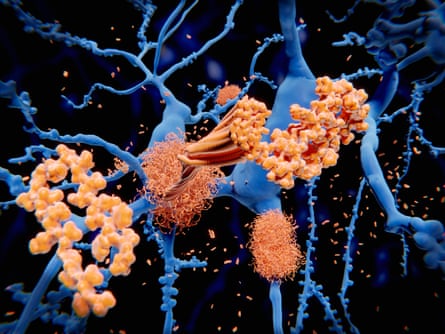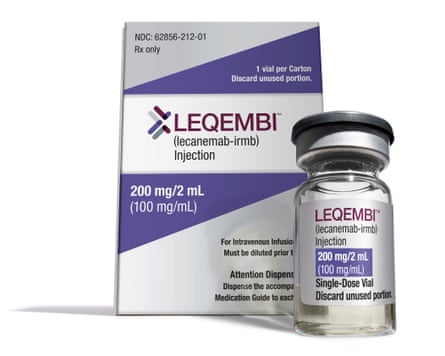With your likely chance of dementia, has your doctor DONE ONE DAMN THING TO PREVENT IT? Maybe done any followup on these previous pieces of research?
Yet More Evidence that Viruses May Cause Alzheimer's Disease July 2018
I had cold sores when I was a kid, haven't had one in decades, wonder if I need to be concerned.
Have we found the true cause of diabetes, stroke and Alzheimer's? August 2019
Fructose may be fueling the formation of Alzheimer’s disease February 2023
Your risk of dementia, has your doctor told you of this?
1. A documented 33% dementia chance post-stroke from an Australian study? May 2012.
2. Then this study came out and seems to have a range from 17-66%. December 2013.`
3. A 20% chance in this research. July 2013.
4. Dementia Risk Doubled in Patients Following Stroke September 2018
The latest here:
Could Alzheimer’s be caused by an infection?
Research into the disease has focused on plaques in the brain. But some scientists think viruses and bacteria play a role – and their work is gaining ground
Sun 19 Feb 2023 06.00 EST
Last modified on Sun 19 Feb 2023 15.43 ESTAs Davangere Devanand, a neurologist at Columbia University Medical Center, combed through the reams of scientific data on Alzheimer’s, he stumbled across a surprising idea – could an infection be involved in driving the disease?
“I was looking for an Alzheimer’s treatment approach that had a reasonable shot of working,” he says. “I found this old theory, going back 35 years, which linked herpes viruses to the disease, and there were all these indirect lines of evidence.”
The further Devanand looked, the more he found. Since the mid-80s, a handful of scientists around the world had doggedly pursued the idea that either a virus or a bacterium could play a role in Alzheimer’s, despite almost complete antipathy from those studying more accepted theories about the disease. Colleagues snubbed them, leading scientific journals and conferences rejected their work and funding had been threadbare, but slowly and surely, they built an increasingly compelling case.
In particular, evidence pointed towards herpes simplex virus 1 (HSV-1) – a pathogen found in 70% of the UK population, and the cause of oral herpes – as a prominent suspect. Studies in the UK, France and Scandinavia suggested that people who had been infected with herpes were more likely to get Alzheimer’s. When Prof Ruth Itzhaki from Oxford University’s Institute of Population Ageing – who has done more than any other scientist to advance the HSV-1 theory of Alzheimer’s – examined postmortem brain samples from patients, she found greater amounts of the virus’s DNA than in people who had not died of the disease.

“Then there was this 2018 study from Taiwan, which was quite dramatic,” says Devanand. “When people with herpes were treated with a standard antiviral drug, it decreased their risk of dementia nine-fold.”
Devanand was intrigued because while the major hallmarks of Alzheimer’s are well-known, we still have little idea about what triggers it. We know that toxic plaques and tangles form inside the brain, causing damaging inflammation and the death of brain cells. Certain genes and lifestyle factors such as loneliness, lack of exercise and poor diet can all increase the risk of developing Alzheimer’s, but how and why it begins remains a mystery. Could a virus be the smoking gun that scientists have been looking for?
Others have suggested that various bacteria may also be capable of initiating the neurodegeneration that leads to Alzheimer’s. Chlamydia pneumoniae, which causes lung disease, Borrelia burgdorferi, which is associated with Lyme disease, and even gum infections have all been put forward as possible triggers.
The main idea for why viruses like HSV-1 and possibly bacteria may be capable of triggering Alzheimer’s is that they invade the body before burrowing into the central nervous system, and travelling to the brain sometime in midlife. Once there, they stay dormant for many years before being reactivated in old age, either because the ageing immune system can no longer keep them in check, or something else – a traumatic episode, a head injury or perhaps another infection – spurs them to life. Once awakened – so the theory goes – they begin to wreak havoc.
For a long time, neurologists treated these ideas as fanciful, until more and more irrefutable evidence arose for the role of pathogens in chronic illness. Last year, the Epstein-Barr virus was identified as the main risk factor for multiple sclerosis, while other studies have shown that a bout of measles can lead many years later to a progressive neurological disorder called subacute sclerosing panencephalitis.
So when Devanand approached the US National Institute on Aging for a grant of several million dollars to run a clinical trial investigating whether a herpes antiviral drug called valacyclovir could slow the progression of Alzheimer’s in patients in the early stages of the disease, they agreed to back him.
The ongoing trial, which is expected to be completed by early 2024, could have significant implications for how we look at the disease.
For decades, the number-one focus of almost all Alzheimer’s endeavours has been a protein fragment called beta-amyloid, often referred to as simply amyloid. Orthodox Alzheimer’s theories suggest that this accumulates in the brain as a kind of toxic waste, causing the signature plaques that kill brain cells and lead to the disease. Funding bodies and drug developers have largely shunned alternative explanations for why Alzheimer’s may occur, and instead have continued to pump resources into amyloid research.
But scientists are starting to show that the amyloid and microbial theories of Alzheimer’s may not be mutually exclusive. For while amyloid has long been seen as the villain of the story, some scientists believe it is actually a key element of our brain’s defence mechanisms against external threats. Fifteen years ago, Rudolph Tanzi, a neurology professor at Harvard Medical School who has discovered many of the key genes linked to Alzheimer’s, made a surprising discovery – amyloid has antimicrobial properties, helping to defend the brain against any invading pathogen. More than a decade’s worth of experiments later, he has developed a viable theory for why plaques form.
“When an infection attacks your brain, your first response is these little sticky peptides that bind to the microbe, glutinate it into a ball and trap it,” he says. “We found that amyloid is one of the major peptides in the brain that goes after microbes. I believe the plaques we see in Alzheimer’s brains actually evolved as a way to protect the brain.”
According to Tanzi, for much of our lives our body is able to seamlessly clear these clumps of amyloid. Immune cells known as microglia, which cleanse the brain of debris, gobble them up during deep sleep. But as we age, this finely tuned system can break down, and if amyloid is left lingering in the brain, it ends up harming us.

People with certain genetic vulnerabilities – such as the APOE4 gene variant found in up to 25% of the general population – are unable to shovel out amyloid quite as efficiently as others, meaning it is more likely to accumulate. Ageing also weakens the immune system, making it easier for pathogens to access the brain and more amyloid to form.
“As you get older, your immune system starts to wane, and the barrier between your bloodstream and the brain is not what it used to be,” says Tanzi. “So you’re creating a perfect storm because microbes can proliferate better, and the brain does not clear amyloid as well as it used to.”
Hugo Lövheim, a researcher in geriatric medicine at Umeå University, says that we also know that lifestyle factors such as social isolation and lack of exercise can weaken the immune system. He suggests this could have two consequences – making it harder for the body to keep microbes such as HSV-1 in check, and then being unable to clear the resulting plaques.
“We know that psychological factors or stress can affect the risk of being unable to control a herpes virus infection at a particular time point,” says Lövheim.
The burden of Alzheimer’s and all forms of dementia on patients, families and society at large is unspeakably huge. By next year, it is predicted that there will be more than 1 million people in the UK living with dementia, numbers that our healthcare system is not equipped to deal with. The total cost of dementia care in this country stands at around £34.7bn a year, but the starkest statistic is that two-thirds of this burden is being covered by families themselves, either in unpaid care or private social care.
But the landscape of Alzheimer’s treatments could not be sparser. Almost all clinical trials testing drugs attempting to reduce the amount of amyloid in the brain have failed to stop the disease. Even lecanemab, the new amyloid-targeting Alzheimer’s medication that hit the headlines towards the end of 2022, only offers marginal benefits in slowing down memory loss. Medicinal chemist Derek Lowe, who writes a blog on the pharma industry for the journal Science, commented that lecanemab shows that while amyloid is definitely involved in Alzheimer’s disease, it is perhaps unlikely to be the underlying cause.
“Lecanemab did indeed show substantial amyloid clearance in the brain, so it is definitely working on target,” wrote Lowe. “The fact that the drug has such effects on amyloid and still just barely slows the course of the disease, argues for that point of view.”
Some scientists suspect that the reason why anti-amyloid drugs have been ineffective in stopping Alzheimer’s is because we give them too late in the disease course, years or decades after the plaques have started to accumulate. By this point, it is widespread neuroinflammation that is killing off cells, which is why some companies, such as Switzerland-based AC Immune, are now looking to target the inflammation pathways in the Alzheimer’s brain.

While anti-amyloid drugs could be tried on people in midlife to see if it stops them developing the disease, Tanzi says that the costs of this are likely to be impractical. “If every American had a blood test for amyloid today, 40 million would find out that they need to do something about it,” he says. “But if you have anti-amyloid treatments that cost $26,000 a year, good luck getting those to 40 million people, especially when each one would need three MRI scans a year to make sure that they don’t have any brain swelling or haemorrhaging as a side effect.”
Instead, if scientists can generate some more proof that a microbe is definitely instigating the disease in at least a proportion of patients, it could open the door to some more practical disease prevention initiatives. Making antivirals available to all people who have been infected by herpes could be one idea, or even encouraging more midlife vaccinations, for example against the varicella zoster virus (VZV) that causes shingles. It has been suggested that VZV is capable of reactivating the HSV-1 virus from a dormant state, and Itzhaki has found that giving people a shingles vaccine seems to lessen their risk of developing Alzheimer’s.
But Alzheimer’s is a devilishly complex disease and there is still much to be done in order to convince the majority of scientists that infections are involved. For while epidemiology and lab studies seem to show that it is possible, several clinical trials have ended in failure. When Canadian scientists gave Alzheimer’s patients multiple antibiotics, it showed no benefit. San Francisco-based biotech Cortexyme – now known as Quince Therapeutics – spent years developing a drug that could target Porphyromonas gingivalis, a bacteria that causes gum disease and secretes harmful enzymes that can leak into the brain. But when it has been tried clinically, it also failed to work.
Tanzi suspects that once again, we may be giving treatment to patients too late in the day. “If an infection drove the amyloid formation, it could have happened 30 years ago,” he says. “It just took 30 years before you got enough neuroinflammation to get the disease.”
Devanand’s trial will provide crucial evidence regarding where to go next. If it shows some sign of benefit, it may help persuade funding bodies to stump up money to give antivirals to people in their 40s and 50s who are genetically at risk of Alzheimer’s, or vaccinate a large number of people against various common viruses.
Devanand, and scientists such as Itzhaki who have dedicated their lives to this line of research, are hoping for just some hint that they are on the right track. “We’re not curing the disease in this trial,” he says. “We’re looking to see if patients who get an antiviral experience less decline than those who get a placebo. And if herpes is a contributing factor, it should be good to treat it.”
No comments:
Post a Comment